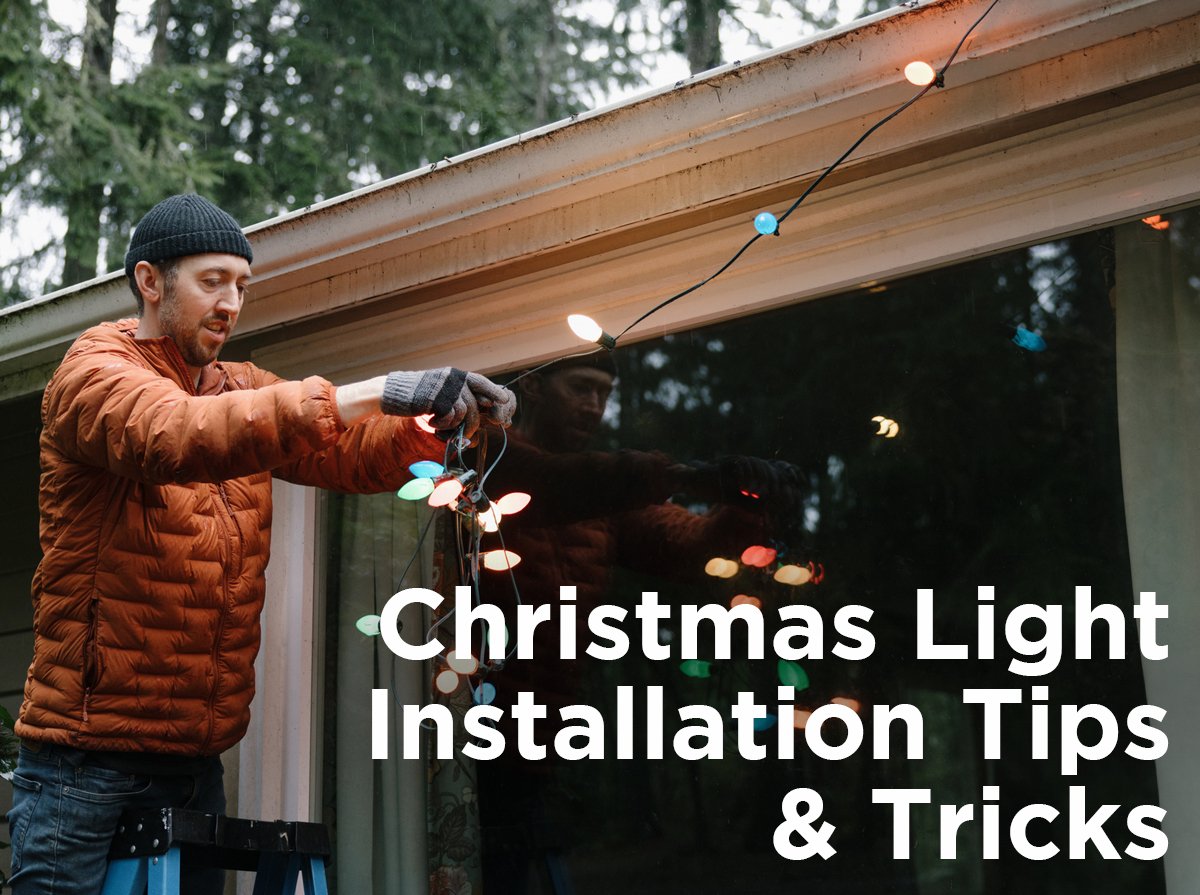Tips for Protecting Outdoor Light Strings Part 2
Whether you are setting up lights for the holidays or installing permanent patio light strings in your backyard, protecting your outdoor light strings should be your top priority. The first part of our tips for protecting outdoor light strings focused on making sure your lights are outdoor rated and how to keep connections safe. Now we’ll discuss how to keep from overloading your strings and circuits, as well as protecting wires from damage.
Stay Under the Maximum Wattage and Connections
In order to keep from shorting out your string or blowing a circuit in your house, you need to stay under the maximum wattage or number of connections the light string can handle. Maximum wattage is the total wattage an individual string can handle. When connecting more than one string, the maximum run is the total wattage multiple strings can handle. Max connection is the total number of light strings that can be safely connected together. When calculating maximum runs from the bulb wattage, the best rule of thumb is to use no more than 80% of the possible wattage. If you need to reduce the wattage on patio lights and commercial spools, use LED bulbs.
Avoid Overloading Your Circuits
Drawing too much wattage through a circuit can lead to tripped breakers, shorts, and even electrical fires. Most homes have either 15 or 20-amp circuits. 15-amp circuits can handle no more than 1800 Watts, and no more than 2400 Watts can be used on a 20-amp circuit. As with light strings, you should try to stay under 80% of those amounts. Before plugging in your lights, check to see if your outdoor outlets are on a shared circuit or have their own dedicated circuits. Try to spread the light strings out between circuits as much as possible to help reduce the load.
Avoid Overloading Extension Cords
Did you know that extension cords can become overloaded as well? All extension cords have a maximum amperage rating listed on the packaging. Exceeding that can cause the cord to overheat and potentially become a fire hazard. Find the amps of your lights by dividing the total wattage of the strings by 110 (Amps = Watts/110). Once you have the amps, the length and wire gauge needed for the extension cord can be determined. Be sure to get a cord in the length you need while avoiding a lot of excess. The current loses voltage the farther it has to travel down the cord. To negate voltage drop in longer cords, choose one with a larger gauge. For example, a 100 foot 16-gauge 2 wire cord (16/2 or 16 AWG /2) can handle 10 amps while a larger 10-gauge 3 wire cord (10/3 or 10 AWG /3) of the same length can handle 15 amps.
Use GFCI Outlets for Added Protection Against Faults
In all likelihood, you have a GFCI (Ground Fault Circuit Interrupter) outlet in your bathroom. If you don’t know what that is, it’s the outlet with the two little buttons that trip when you are using your blow dryer or curling iron. These outlets are designed to cut the power if an imbalance in the electrical current is detected, and are required for outdoor use per the National Electrical Code (NEC). All newer homes should have these outlets installed outdoors with covers to protect them from rain and dirt. If you need GFCI outlets, we recommend having a licensed electrician install them. Do not try to run extension cords through doors or windows to power your outdoor light strings. The cords could become damaged by being pinched or crushed in the doorway or window sill and ultimately result in a safety hazard.
Don’t Use Staples or Uninsulated Metal Hooks to Hang Lights
As you hang your lights avoid using staples or uninsulated metal hooks. Staples can easily crush or pierce the wires and damage the jackets. Metal hook and clips that lack a protective coating such as vinyl can heat up in hot climates, potentially melting the jackets and exposing the wires to the elements. Eye screws, cup hooks, and other assorted hanging hooks with a protective coating are available. Plastic mounting clips can also be used for installing Christmas light strings.
Deter Squirrels and Other Pests from Chewing Wires
Have you noticed chew marks on your outdoor light strings? Squirrels in urban areas like to chew on wires to grind their teeth. Damaged strings need to be replaced immediately to avoid shorting out your entire display. To keep squirrels and other pests from chewing on strings, you need to deter them. Scare pests away with owl decoys or use ready-made squirrel repellent. You can find more ways to deter squirrels in our previous blog post.
Properly Store Light Strings When Not in Use
Ensuring that outdoor light strings are stored properly can help alleviate a lot of issues later on when you use them again. To prevent tangles and broken wire, wrap or coil outdoor light strings before storing them. Storage boxes specifically for string lights have plastic forms that lights can be wrapped around. You can also make your own with pieces of cardboard, wrapping paper tubes, or clothes hangers. Cord reels can also be used for longer Christmas light strings and patio lights. When storing patio light strings, remove the bulbs and store them separately to prevent breakage.
Did we leaving anything out? Leave your helpful outdoor lighting tips on the comments below. Be sure to visit our Facebook, Twitter, LinkedIn, Instagram, and Pinterest pages to find more ways to protect your light strings!










